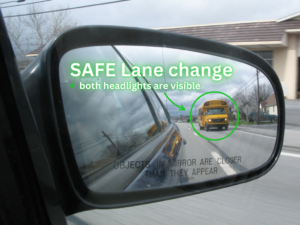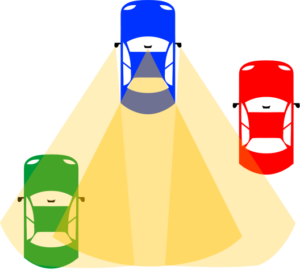Spatial Awareness While Lane Changing
Written By | Doreen Almirol | 20+ years CA DMV Licensed Driving Instructor |
Lane changes are a routine part of driving, but they require careful consideration and skill. Making a successful lane change involves much more than simply flicking on your turn signal and merging into the adjacent lane. It requires a keen sense of spatial awareness, which is the ability to perceive and understand the position and movement of objects in your immediate environment. In this article, we’ll delve into the importance of spatial awareness when making a lane change and provide you with tips to enhance your driving skills and safety on the road.
This blog may contain affiliate links, and if you make a purchase through these links, we may or may not earn a commission at no extra cost to you.
1 | Understanding Spatial Awareness
Spatial awareness while lane changing is your ability to gauge distances, sizes, and relative positions of objects around you. It involves not only what’s directly in front of and behind your vehicle but also what’s happening in adjacent lanes next to you and even further down the road. When it comes to making lane changes, spatial awareness is essential because it allows you to:
Assess Gaps: You need to accurately judge the distance between your vehicle and the cars around you. This helps you identify safe gaps in traffic to merge into. A good rule of thumb, for safe spacing with the car behind you, make sure you can see both headlights of that car in your side view mirror. The image below shows that the school bus is at a safe distance to lane change in front of since we can see both headlights.
The image below of your left side moirror, however, shows that the first car behind you in traffic only shows ONE headlight. The vehicle is too close and lane change at the moment is NOT safe.
Predict Movements: Spatial awareness allows you to anticipate the actions of other drivers. You can predict whether a nearby vehicle will speed up, slow down, or maintain its current speed.
Maintain Safe Following Distances: Keeping a proper following distance is crucial for safe driving. Spatial awareness helps you maintain an appropriate gap between your car and the vehicle in front of you.
RELATED ARTICLE: Safe Spacing
Avoid Blind Spots: Identifying blind spots – areas around your vehicle not visible in your mirrors – is a vital part of spatial awareness. Failure to do so can result in dangerous lane changes. In the image below, the RED car is in the BLUE car’s blind spot. Remember, your blind spot is usually the space next to your back tires.
Make Informed Decisions: Knowing the location of other vehicles and understanding their movements empowers you to make informed decisions, such as when to change lanes or when to yield the right of way.
Timing and Positioning: Proper spatial awareness enables you to judge the speed and distance of nearby vehicles accurately. This skill is essential for timing your lane change correctly and positioning your vehicle in the gap between lanes safely.
2 | Developing Spatial Awareness While Lane Changing
Mirror Checks: Regularly scan your mirrors to stay aware of vehicles around you. Adjust your side and rearview mirrors to minimize blind spots and maximize your field of vision.
Use Turn Signals: Always signal your intent to change lanes well in advance. This alerts other drivers to your intentions and allows them to adjust their own driving accordingly.
Shoulder Checks: Perform shoulder checks before changing lanes. These quick glances over your shoulder can help you spot vehicles in your blind spots that may not be visible in your mirrors.
Maintain a Safe Following Distance: Keep a safe following distance behind the vehicle in front of you. Increase this distance in adverse weather conditions.
Stay Mindful of Traffic Flow: Pay attention to the flow of traffic and adjust your speed and position accordingly. Avoid weaving in and out of lanes unnecessarily.
Avoid Distractions: Eliminate distractions such as texting, talking on the phone, or fiddling with the radio. A distracted driver is more likely to overlook critical spatial information.
RELATED ARTICLE: Avoiding Distracted Driving
Spatial awareness is an indispensable skill for safe and confident lane changes. By honing your ability to assess distances, predict movements, and stay aware of your surroundings, you can make lane changes with ease and minimize the risk of accidents. Remember to use your mirrors, signal your intentions, and perform shoulder checks to ensure that your lane changes are both smooth and safe. Spatial awareness not only contributes to your safety but also enhances the overall driving experience for you and those sharing the road. Safe travels!
Need More Help With Driving?
Dive deeper into our wealth of resources for more driving tips and insights with informative articles from our blog. From mastering challenging weather conditions to navigating busy city streets, we’ve got you covered. Keep yourself and others safe on the road by staying informed and up-to-date. Click here to explore more and become a driving pro! 🚗💡




